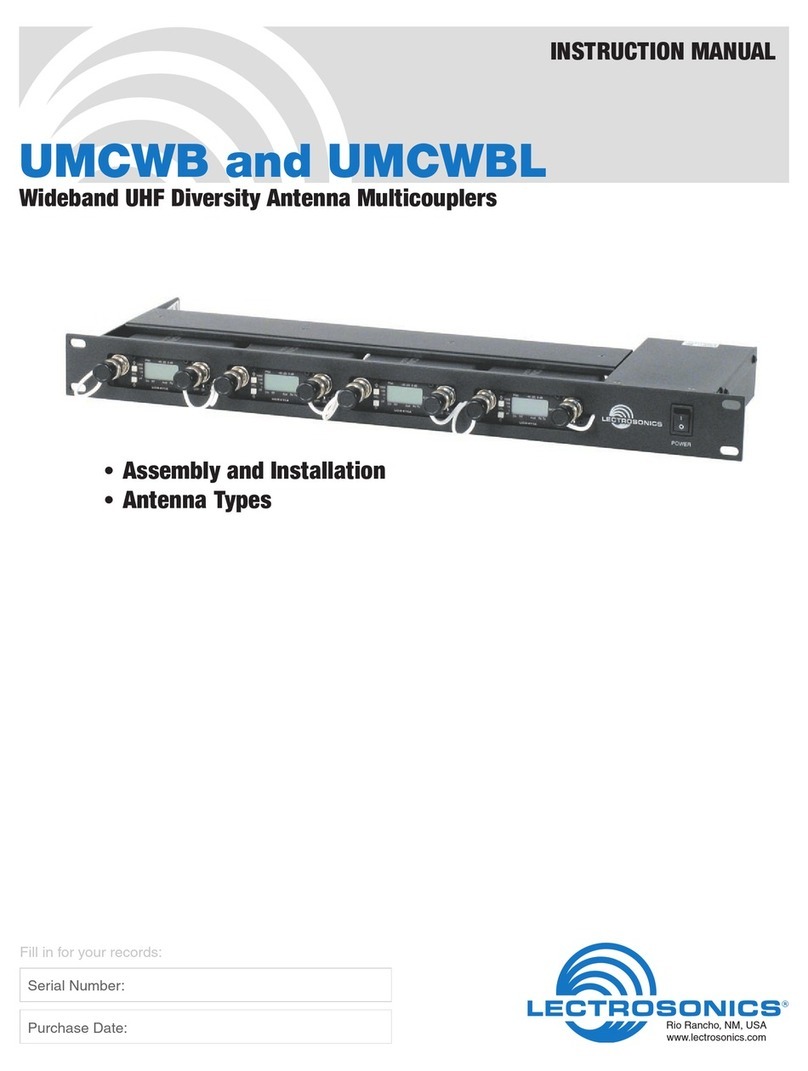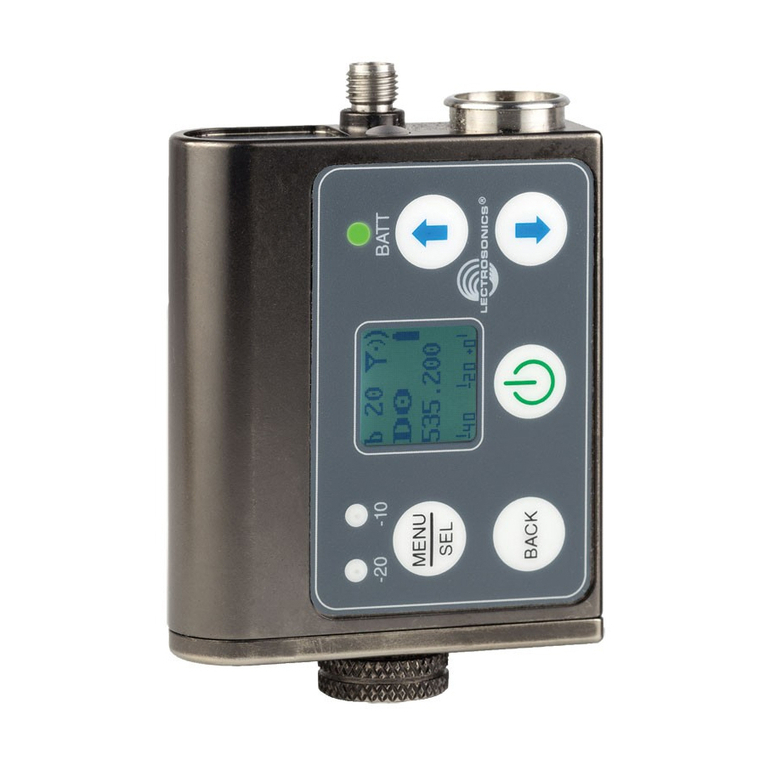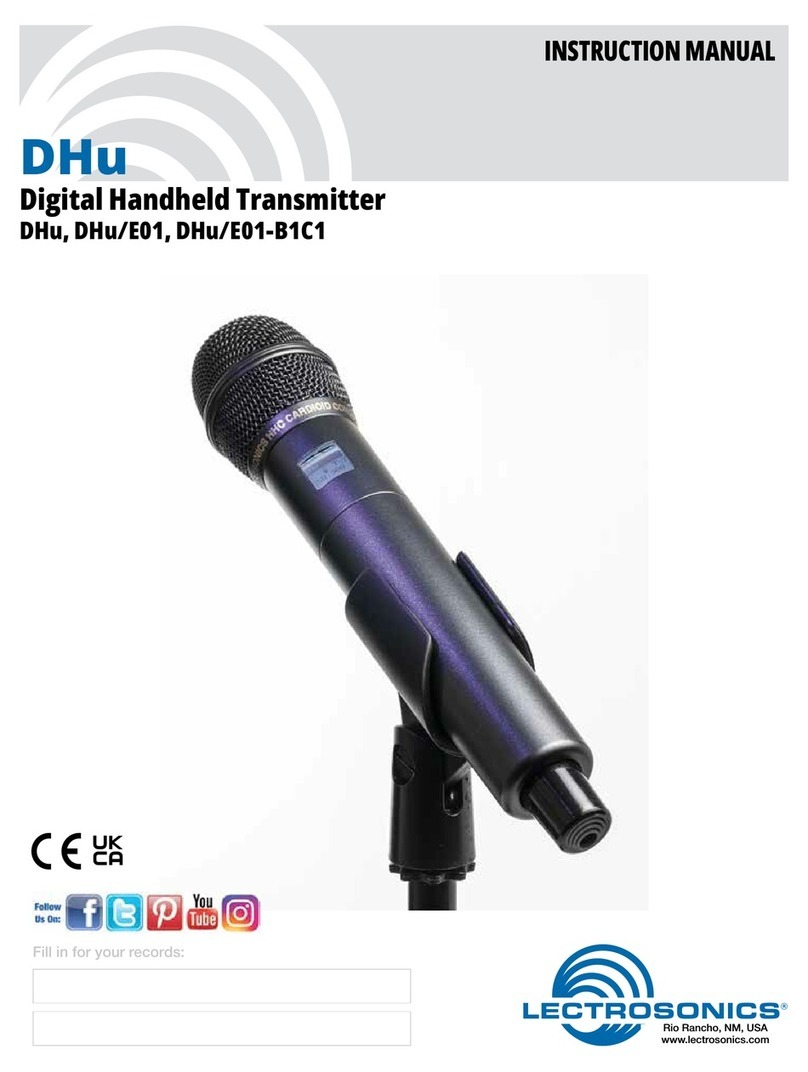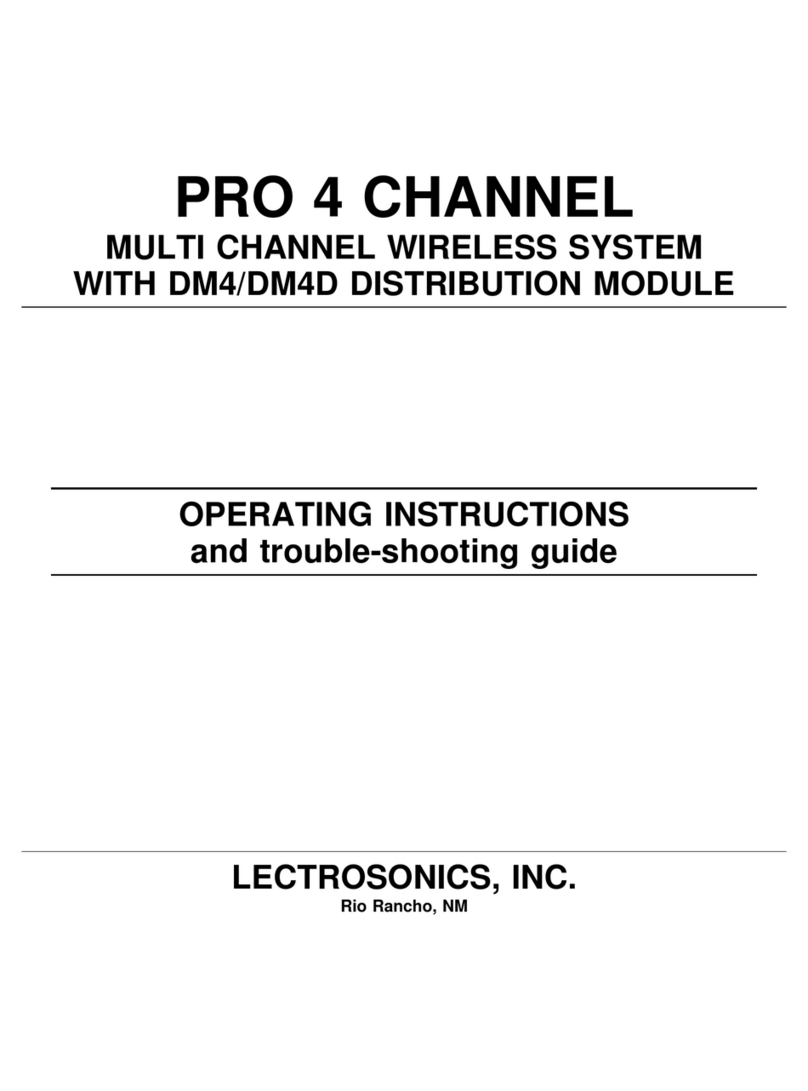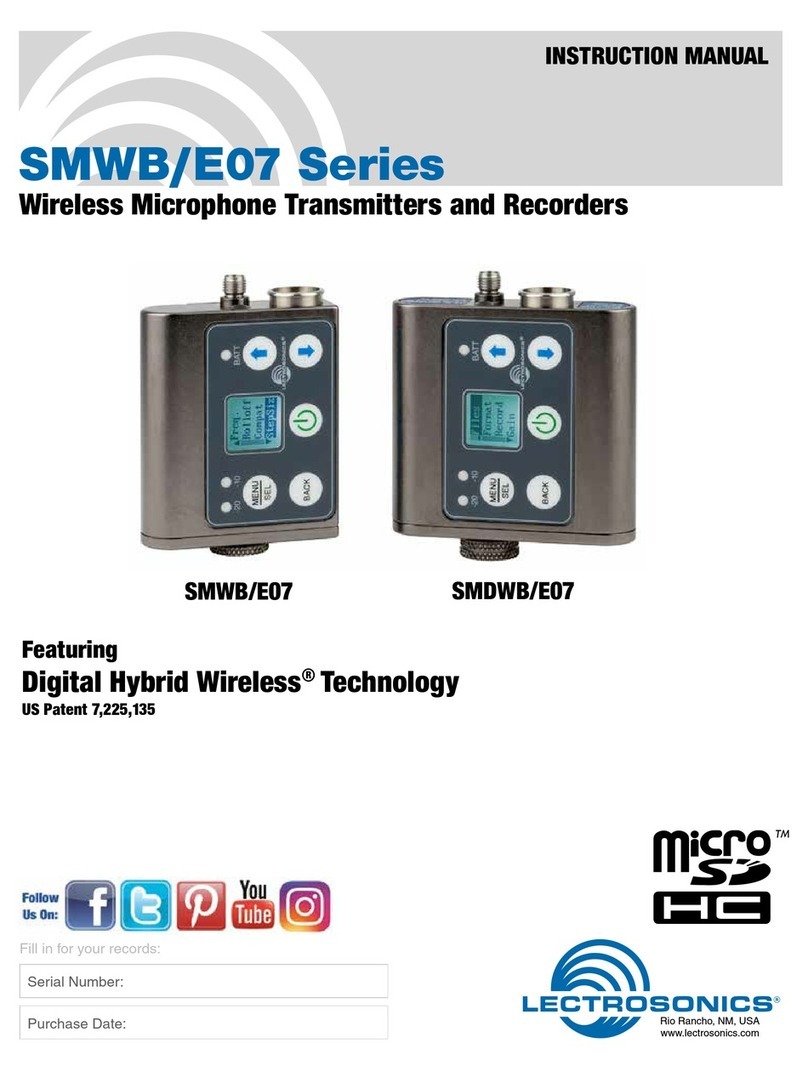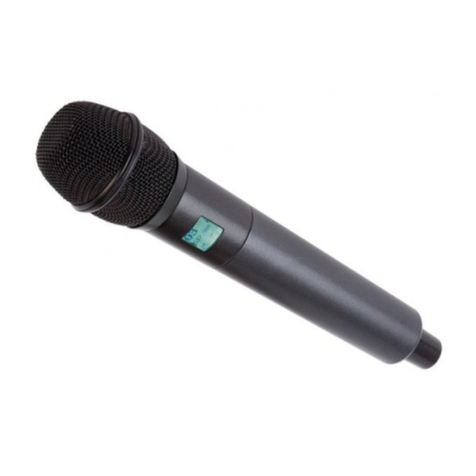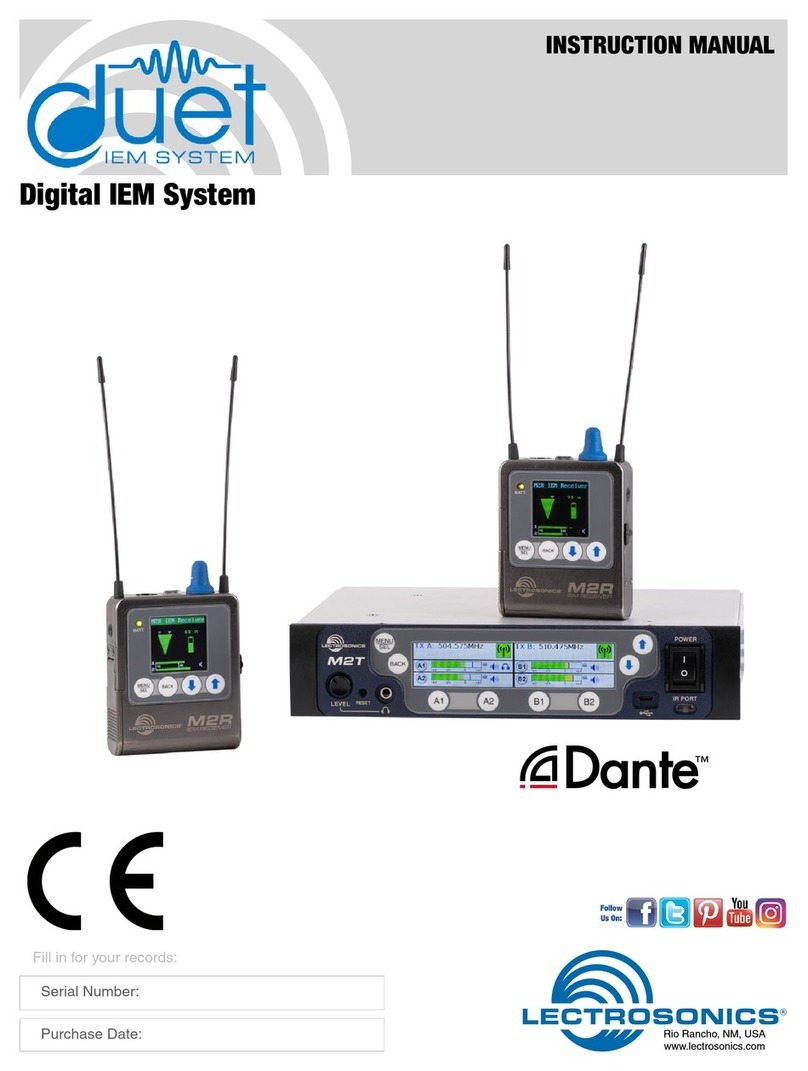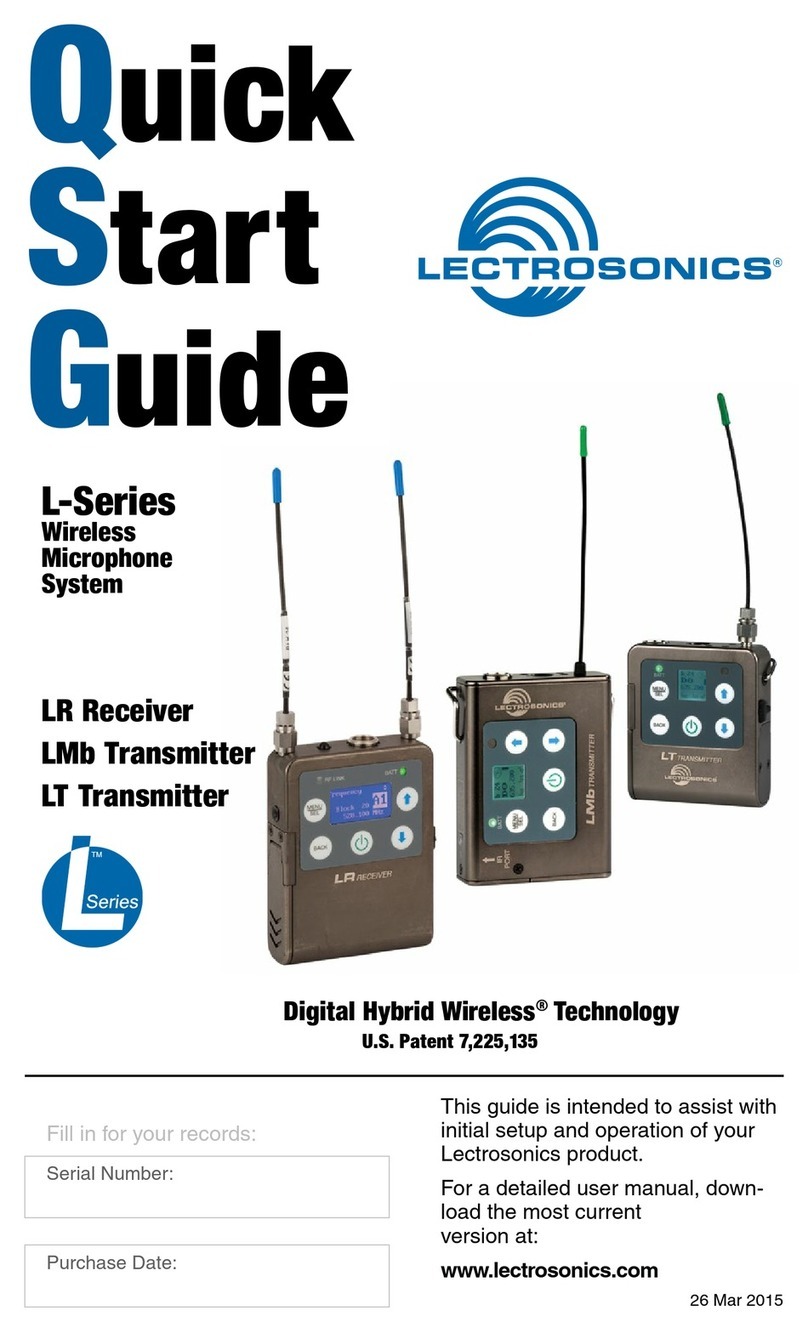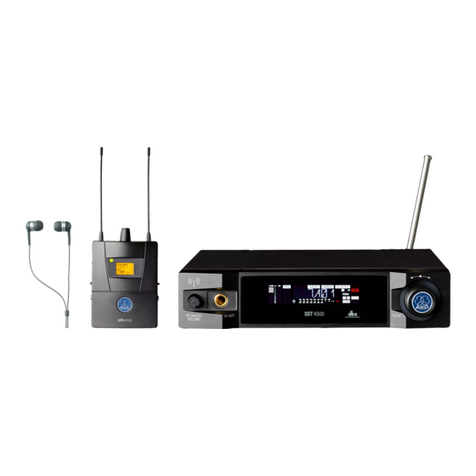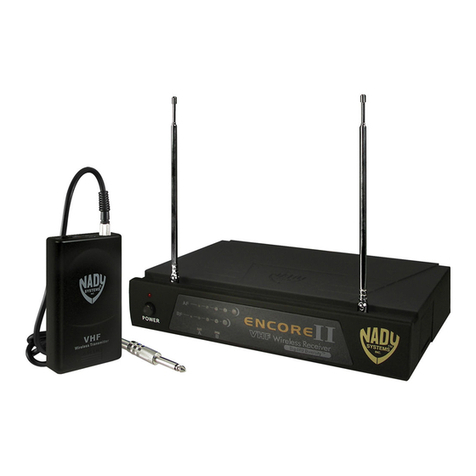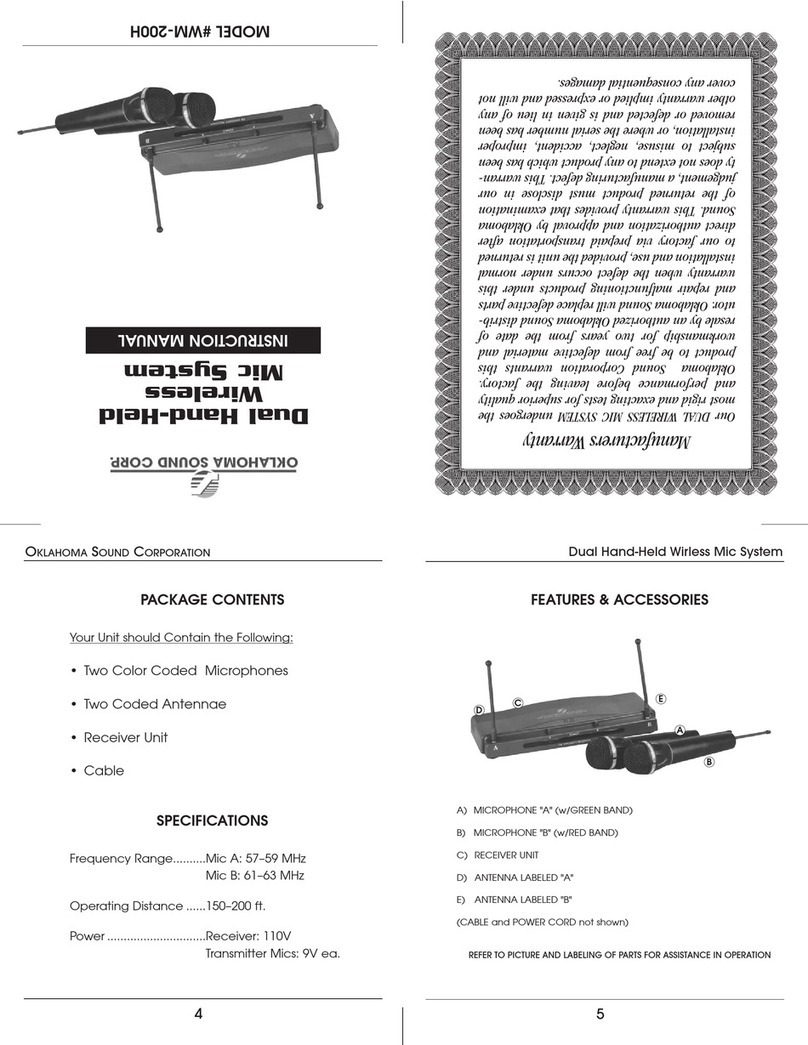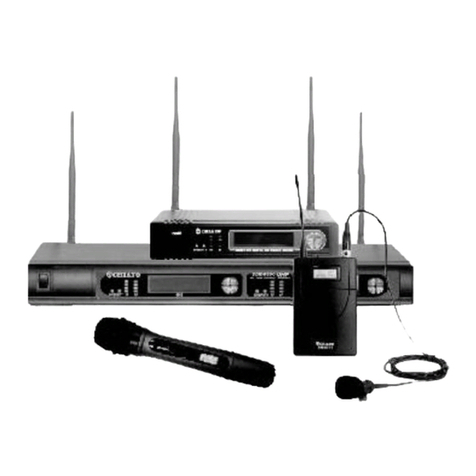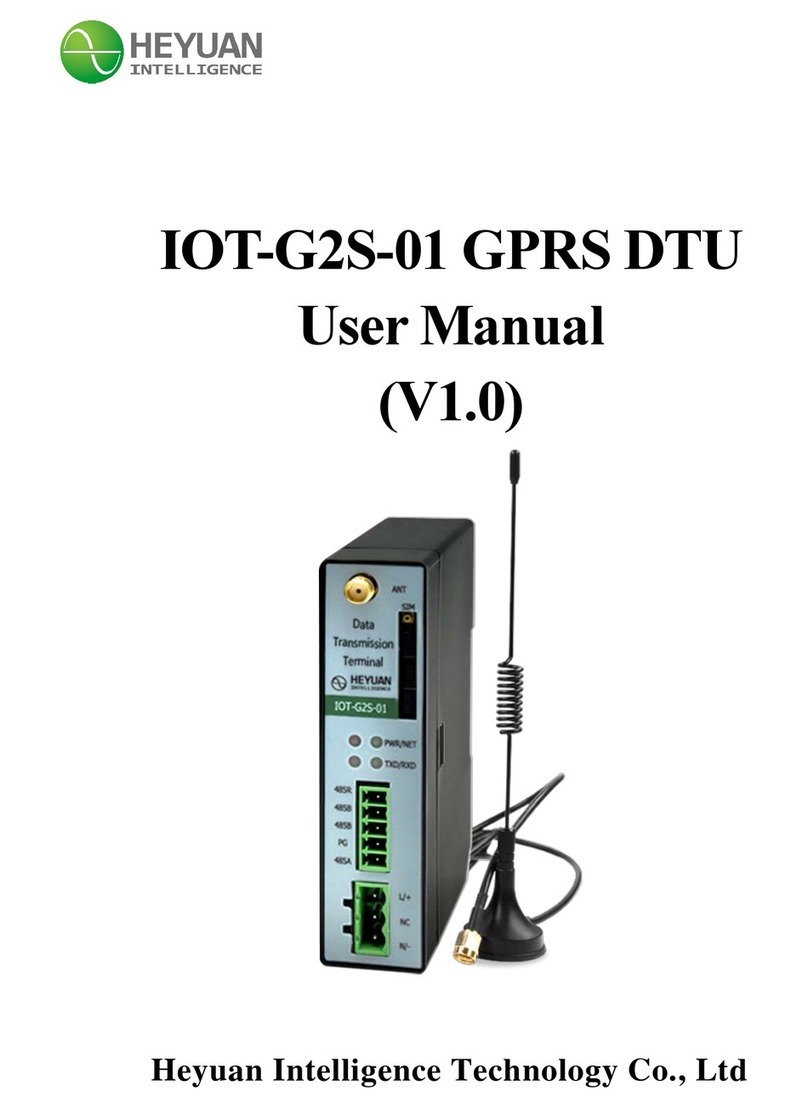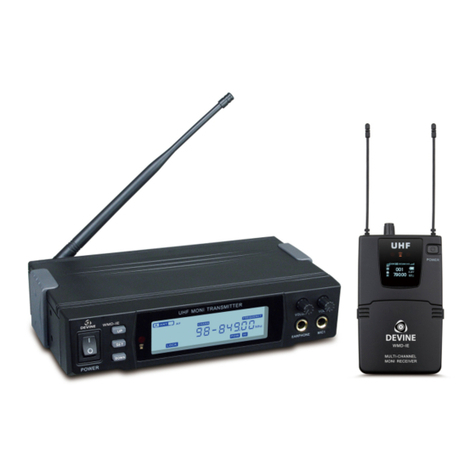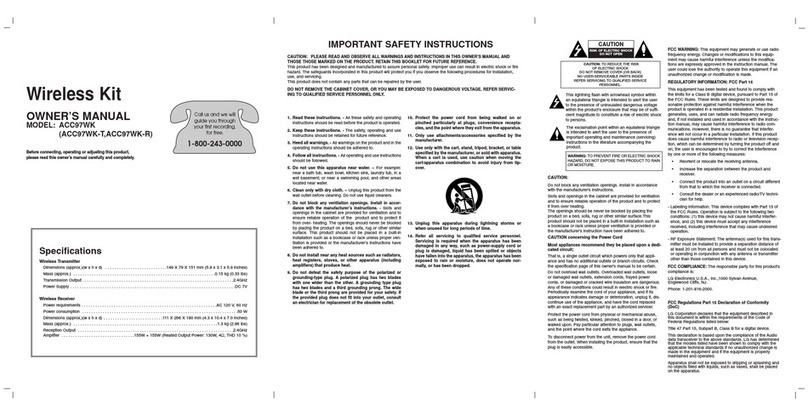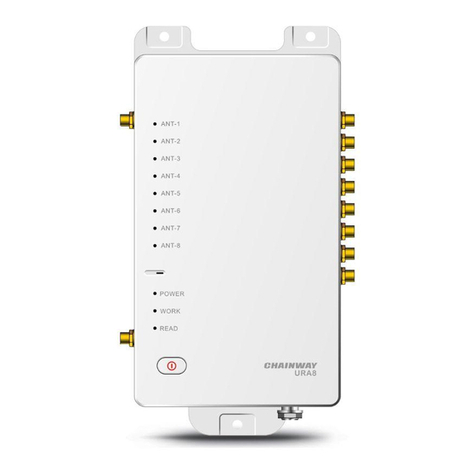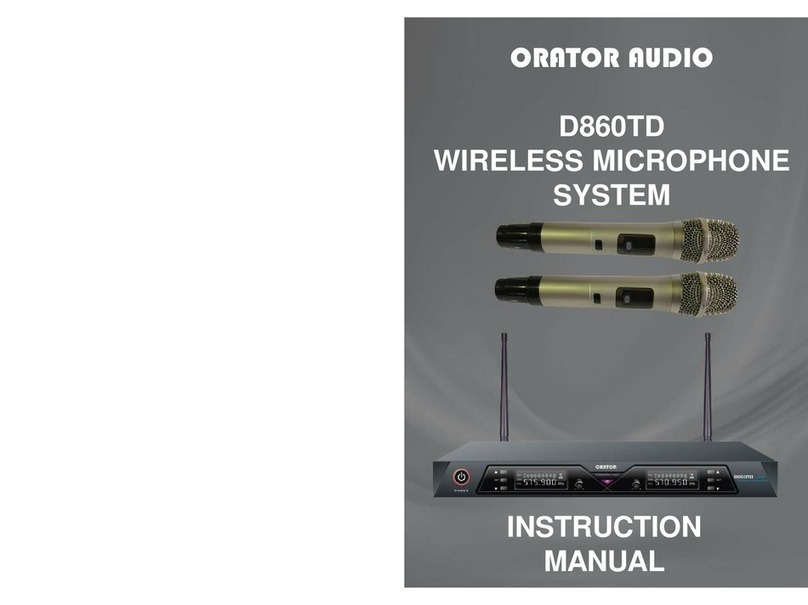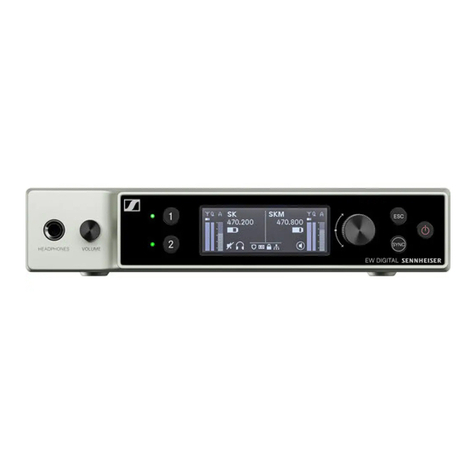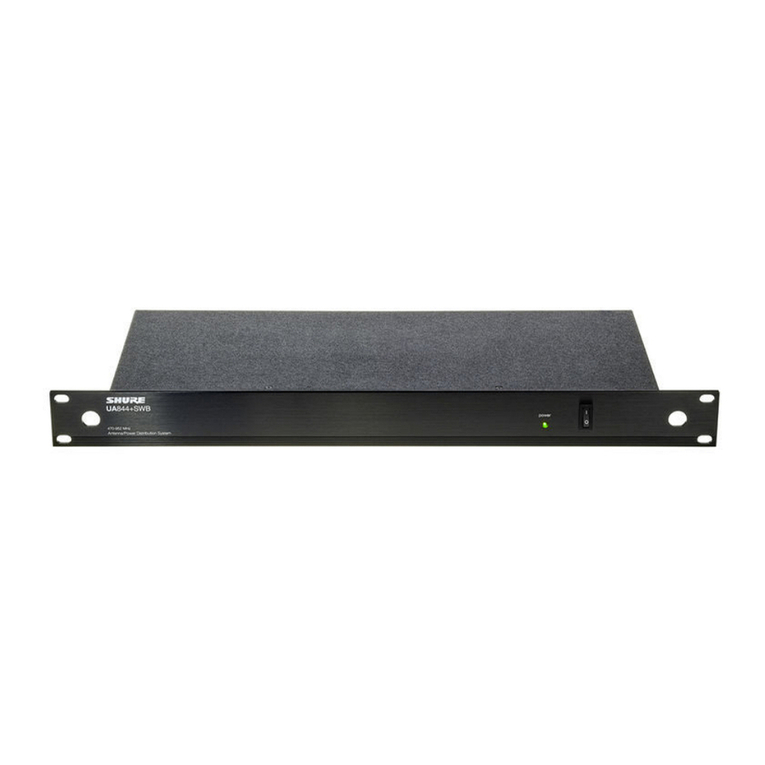Hand Held Transmitter
Rio Rancho, NM 5
Pilot Tone Squelch
The benefit of the pilot tone squelch system is that
the associated receiver will remain muted until it
receives the pilot tone from the matching transmit-
ter, even if a strong RF signal is present on the
carrier frequency of the system. All Digital Hybrid
transmitters use one of 256 different ultrasonic tones
between 25 and 32 kHz to operate the receiver
squelch. The pilot tone frequency is chosen accord-
ing to which of the 256 channels has been selected
by the frequency switch setting. This ensures that all
transmitters on each frequency block in a multi-chan-
nel system have different pilot tone frequencies so
that even spurious RF from the wrong transmitters
will not open the receiver squelch.
Input Gain Range and Limiter
45 dB range of input gain adjustment allows gain
settings to accurately match the user’s voice level.
A DSP-controlled analog audio limiter is employed
before the A-D converter. The limiter has a range of
more than 30 dB for excellent overload protection. A
dual release envelope makes the limiter acoustically
transparent while maintaining low distortion. It can be
thought of as two limiters in series, a fast attack and
release limiter followed by a slow attack and release
limiter. The limiter recovers quickly from brief tran-
sients, with no audible side effects, and also recov-
ers slowly from sustained high levels to keep audio
distortion low while preserving short term dynamics.
Long Battery Life
Switching power supplies throughout the design
extend battery life by allowing the unit to continue
to operate and remain stable with full power output
down to low battery voltages.
Menu-Driven Control
A high-resolution LCD and control panel with mem-
brane switches provide access to the menu-driven
setup. The backlit LCD is placed on the outer hous-
ing and the control panel is concealed by the outer
housing cover. The control panel is accessed by
opening the lower housing cover, which also access-
es the battery compartment.
Frequency Selection
Operating frequency is normally selected using a
receiver or analyzer to assess signals in the local
environment to avoid interference. Once an inter-
ference-free frequency is identified, the transmitter
frequency is set to match the receiver.
The LCD on the transmitter displays frequency in
MHz and with a two character hex code that is used
on most Lectrosonics receivers.
Membrane switches on the control panel select 256
frequencies in 100 kHz steps or 1024 frequencies in
25 kHz steps over a 25.6 MHz range.
Output Isolator
The output circuit includes a special RF device called
an isolator. Its purpose is to block radio signals
from coming back into the transmitter final amplifier
through the antenna.
The isolator suppresses IM (intermodulation) that
can take place between two or more transmitters that
are in close proximity to one another (a few feet).
This form of IM is a particular concern in produc-
tions where the transmitters must operate very close
together. Isolators allow the use of higher transmitter
output power without sacrificing IM rejection.
Isolators are rarely found in wireless microphone
transmitters due to the high cost, but they are the
best solution to address multi-channel IM between
multiple transmitters.
Antenna
A newly designed integral antenna allows the trans-
mitter to be held in any position, since the user’s
hands have little or no effect on the radiated power.
Microphone Capsules
The HH/E01 handheld transmitter is available from
Lectrosonics with the HHC cardioid condenser
microphone capsule. Capsules from several other
manufacturers are compatible with the transmit-
ter using an industry standard interface: 1.25” x 28
thread pitch and three contact rings. Dynamic and
condenser microphone heads can be used with the
HH/E01, depending on the user’s preference or the
application.
IR Sync
The HH/E01 is equipped with an IR (infrared) port
for use with receivers that will be developed in the
future. Settings such as frequency stored in the
receiver will be sent to the transmitter via the IR port.
No such receivers are available as of the date of this
writing.
Mute and Talkback Functions
A programmable switch on the housing (side switch)
can be configured for a mute or talkback function.
As a mute switch, it works in a latching manner to
disable and enable the audio signal. Push to mute.
Push again to restore the audio. The mute function
defeats the audio in the transmitter, so it works in all
compatibility modes and will all receivers.
The talkback function provides a communication
channel when used with a receiver equipped with
this function, such as a Venue Wideband receiver
with firmware that enables this function. When
pressed and held in, the side switch re-directs the
audio output to a different audio channel on the
receiver. As soon as the switch is released, audio is
returned to the program channel.

